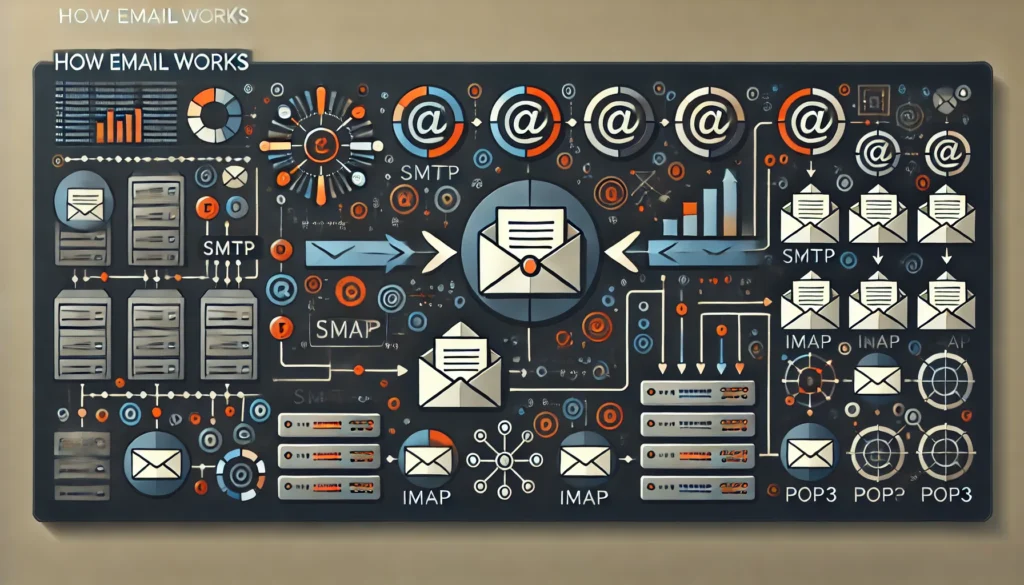How Email Works
Step 1. Sender uses an email client like gmail, yahoo etc to compose an email.
Sender need to specify the recipient’s email address, subject, message body, and attachments if any.
The email client prepares the message in a standardized format called MIME (Multipurpose Internet Mail Extensions).
Sender’s mail server is responsible for sending, receiving, and routing emails.
Step 2. Sender’s email client connects to the outgoing mail server (SMTP) operated by your email provider. The SMTP server validates sender information and checks for any attachments. If everything fine then the email is placed in an outgoing queue.
Step 3. Sender’s mail server (SMTP) performs a Domain Name System (DNS) query check to find the Mail Exchange (MX) records for the recipient’s domain.
MX records specify the mail servers responsible for receiving emails for a particular domain. The email is then relayed to the mail server based on the MX records.
Step 4. Sender’s mail server establishes a Simple Mail Transfer Protocol (SMTP) connection with the recipient’s mail server.
Step 5. The recipient’s mail server receives the incoming email and performs various checks, including spam and virus scanning and stores it in a queue.
Step 6. The recipient’s mail server performs local delivery, placing the email in the recipient’s mailbox.
The recipient’s email server periodically checks for new emails and delivers them to the recipient’s inbox. Once recipient’s client retrieve the email , the recipient can read the email.
How to secure the Email Delivery ?
1. We should use email clients that support encryption (SSL/TLS) for both incoming and outgoing emails.
2. To secure the email delivery, end-to-end encryption can be used.
This ensures that the content of the email is encrypted throughout its entire journey, and only the intended recipient can decrypt it.
3. Apart from this, we can use some authentication mechanisms that helps in preventing email spoofing and phishing attacks by verifying the authenticity of the sender’s domain.


